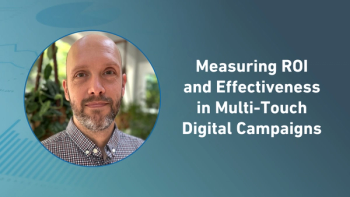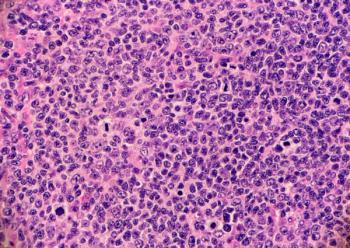
The Remote Patient-Centered Study Approach in Clinical Research
In this article, the authors discuss patient-centered research (also termed "direct-to-patient") that uses the "remote" study approach.
In the healthcare arena, the concept of patient-centeredness has expanded over the last 50 years, beginning as a term to describe patient engagement in self-health management and evolving to include various aspects of patient engagement in healthcare research.1 The creation of the Patient-Centered Outcomes Research Institute (PCORI) further solidified the concept of patient-centered research by its dedication to improving healthcare and outcomes by producing evidence-based data for research guided by patients, their caregivers, and healthcare providers.2
In this article, the authors discuss patient-centered research (also termed “direct-to-patient”) that uses the “remote” study approach. This type of remote patient-centered study puts individuals, rather than investigative sites, at the center of the research process. Both the design and operation of remote patient-centered studies revolve around patients (see Figure 1). Remote patient recruitment, enrollment and retention programs, data collection, and long-term follow-up evaluation offer opportunities to increase research efficiencies. At the same time, this operational approach intensifies patient-centeredness by engaging patients directly in research functions, overcoming geographic obstacles to connect stakeholders, and incorporating patient input into the research process. The remote patient-centered model offers great potential to advance both observational studies and randomized controlled clinical trials.
Remote, patient-centered research has been conducted in observational studies for more than two decades, most commonly in the form of registries. These non-interventional studies typically follow patients with a particular disease or exposure longitudinally to examine the occurrence of associated health outcomes. For example, pregnancy registries monitor women and their offspring who were exposed to certain medications during pregnancy to observe possible adverse outcomes, such as birth defects.3
More recently, drug developers have been exploring potential applications in interventional clinical trials. Forerunners such as the REMOTE (Research on Electronic Monitoring of OAB Treatment Experience) pilot trial sponsored by Pfizer have sparked increasing applications of remote patient-centered study designs in efforts to increase access to patient populations and to improve operational efficiencies.4,5 Although this methodology is still in early stages of development, interest and support from regulators, sponsors, and patients likely will propel it forward in the near future.6,7
The purpose of this article is to examine the remote patient-centered study approach in clinical research. First, we review design and operational elements of remote patient-centered studies. Next, we address some of the challenges to conducting remote patient-centered studies. Finally, we discuss the types of studies best suited to the remote patient-centered study approach.
The remote patient-centered study approach
Most remote patient-centered studies share three basic characteristics: patient engagement; use of a limited number of study sites coordinated by a single-study coordination center; and data collection from multiple reporters and sources (see Table 1).
Table 1. Remote patient-centered research: Design and operational elements
Patient engagement
In remote patient-centered studies, awareness and recruitment activities are targeted directly to patients to engage them in the research process. Interested patients typically contact the study via a study website or contact center where they learn more about the study and how they can contribute and participate, if eligible. Eligible patients then self-enroll directly in the study without visiting a traditional study site. Once enrolled, patients provide study data and/or grant permission for their treating healthcare providers (HCPs) to provide study data. Patients need not be treated at a particular study site by the study’s principal investigator (PI) to enroll. Any eligible patient who is interested in participating and who has access to the required technology (telephone, Internet, smartphone, etc.) can participate in a remote patient-centered study, even those who live in rural areas or who are unable to travel (e.g., elderly, disabled, infants). This approach has potential to maximize engagement and enrollment of all eligible patients. For example, one study found that 69% of subjects who had participated in a remote Internet-based clinical trial reported that they would prefer to participate in this type of trial again rather than to participate in research that used other modes of data collection.8
Limited number of study sites facilitated by a central study coordination center
Because patients are not required to visit a particular study site, there is often only a single site or, for global studies, a single site in each participating country, to manage regulatory submissions. Studies are managed centrally by a remote study coordination center that facilitates all research activities, including recruitment, screening, informed consent, enrollment, and data collection. A medical team, led by the PI, monitors the health and safety of study participants by reviewing all data as they are reported in real time. By relying on a single site or a limited number of sites, the remote patient-centered approach is highly cost-effective, given that cost estimates for management of an active site range from $1,500 to $2,500 per month.9
Data collection
In remote patient-centered studies, it is possible to collect many types of data, both quantitative and qualitative, from a wide variety of primary sources. Unlike site-based studies, data are not collected by investigators during site visits, but rather through the central study coordination center. Remote patient-centered studies support data collection directly from multiple sources, including patients themselves, caregivers, healthcare providers, electronic health records (EHR), existing registries, databases, laboratories, and biospecimen repositories. Depending on the design of a study, collected data can include basic demographic information; anthropometric, biological, and laboratory measurements; medical, family, occupational, and behavioral histories; disease status and natural history; drug treatment information; quality-of-life, disease-related disability; and treatment satisfaction information.
Figure 1. Remote patient-centered studies revolve around the patient
Stakeholder engagement
Remote patient-centered studies facilitate the engagement of stakeholders throughout study design, recruitment, and operation. Key stakeholders include patients themselves, caregivers, doctors, researchers, advocacy/support groups, foundations, research consortia, government organizations, and representatives from biopharmaceutical companies with potential therapies in their pipelines. Empowering stakeholders to play an active role in the study, including participation in advisory committees and protocol development, can greatly improve overall success.
The direct-to-participant approach of remote patient-centered studies and the ability of the remote study coordination center to facilitate global communication make these studies ideal for engaging stakeholders. Study coordinators provide ongoing around-the-clock support via email and telephone to data providers. An investigator-led medical team reviews data in real time to monitor patient safety and data quality. Sophisticated information technology platforms can be used to support these functions while integrating multiple data streams and accommodating the participation of multiple stakeholders.
Addressing research challenges using the remote patient-centered approach
Recruitment
Recruitment is one of the greatest challenges faced inclinical research. A recent study found that 37% of sites under-enroll, and 11% fail to enroll a single patient.10 Unlike site-based studies that recruit only patients treated at particular preselected sites, remote patient-centered studies can include patients without regard to proximity to a study site. Thus, recruitment activities must be targeted directly to patients in addition to other stakeholders and data reporters, such as HCPs and pharmacies. This multi-pronged recruitment approach can be complex and requires expertise to design and implement recruitment strategies. Recruitment efforts should be customized to the population of interest. For example, Internet and social media can be used to reach younger patients, whereas television, radio, and print media can be used to reach older patients. To identify and contact potential subjects, researchers also can leverage disease-specific entities, including registries, research consortia, foundations, advocacy and support groups, and patient communities. Recruitment efforts to reach healthcare providers may include medical and scientific journal advertisements and articles, medical and scientific conferences, and medical websites.
Retention
Along with recruitment, the retention of patients in clinical research studies is an enormous challenge.10 Key obstacles to retention include reporter burden, participant privacy concerns, and lack of incentive. Remote patient-centered studies can be designed to maximize retention by engaging patients and other data reporters throughout the study, streamlining processes, minimizing reporter burden, providing ongoing support, and sharing data among stakeholders. Human data sources, whether patients, HCPs, or caregivers, are vulnerable to survey fatigue. Cumbersome questionnaires and case report forms can dampen participant enthusiasm and provoke study dropout. When designing a study, the primary and secondary endpoints of interest should be selected carefully and the data collected during the study should be limited to only the information necessary for analysis of these endpoints. Data collection processes can be tailored to study-specific needs and made simple and succinct. Alternative data sources such as EHRs should be considered whenever possible to minimize the burden on those reporting data. For example, electronic data capture (EDC) methods can be utilized to streamline the collection of data from medical records, laboratory data, and biological samples, while electronic patient-reported outcomes (ePRO) systems can streamline the collection of data directly from patients.11
Patients and healthcare providers are concerned with maintaining the privacy of their information. Some are wary to share online and are more comfortable providing the information over the phone. Just as in site-based studies, appropriate safeguards should be put in place to ensure that data are protected. Thoughtful pairing of technology with live contact center personnel is often required to obtain an effective balance between efficiency and patient security.
Patient attrition also can be lessened through incentives. Where allowed, monetary incentives can facilitate retention. Remote patient-centered studies that do not require the patients to travel to a study site often are less burdensome and could potentially require less incentive for participation (i.e., payment for travel to the study site). Additionally, remote patient-centered studies are well suited to provide non-monetary incentives through data sharing. The direct-to-participant nature of remote patient-centered studies allows for dissemination of disease-specific communications, such as periodic newsletters and study results. These can be effective methods to improve retention of patients, who are especially motivated by information pertaining to their diseases.
The remote patient-centered model is ideal for streamlining processes and maximizing the participation of patients identified through direct-to-patient recruitment. Centralized operation via a remote study coordination center allows the processes of screening, informed consent and medical record release to be performed remotely. All patient interactions are done by the same team at the coordinating center at the patient’s convenience and, ideally, use the patient’s preferred method of communication (e.g., telephone, Internet, smartphone, etc.).
Analytical issues
From an analytical perspective, the self-selection of participants in remote patient-centered studies can threaten the external validity of study results, as several researchers have noted and discussed.12 Essentially, patients who voluntarily self-enroll represent a “convenience” sample of the population and may be different from the general population in terms of certain demographic or disease-related characteristics. For example, in a remote patient-centered study recruiting patients only from an online patient community (e.g., PatientsLikeMe, MediGuard.org, Inspire), it is possible that patients who enroll are more Internet savvy and interested in health information than the general population. Hence, results may be less generalizable than those of studies with a random selection of participants. Combining different methods of recruitment and offering more than one mode of participation and data collection improves the generalizability of results. As Internet recruitment technology and strategies continue to evolve and the population with the facility to use this technology broadens, concerns about the generalizability of results from this type of study should subside.
Technology issues
Success of the remote patient-centered approach is dependent upon a thoughtful blend of technology and human experience. Remote study coordination centers may require sophisticated information technology platforms for implementation and operational efficiency. The contact support staff tasked with managing the study must be experienced with the platform and able to guide participants through all processes of the study. Remote clinical trial designs are in their infancy, and few pharmaceutical companies and contract research organizations (CROs) currently possess the technology and experience needed to effectively manage these studies and serve as a study-coordinating center. Technology platforms that offer patient recruitment, screening, consenting, and data management functions within one efficient package are ideal for remote patient-centered studies, particularly if they include mobile device capabilities (e.g., enrollment via smartphone) and automated data management features (e.g., email reminders). Experience with these platforms and the ability to tailor them to fit study-specific needs undoubtedly will improve operational efficiencies.
Regulatory issues
There is little official regulatory guidance on designing and conducting remote patient-centered studies. As would be expected, remote patient-centered studies that are observational or that include non-product interventions face fewer regulatory and ethical hurdles than studies that include product interventions. Policies and processes vary by country and region, so remote patient-centered studies require consultation with the appropriate regulatory bodies as early in the research process as possible. In a global study, it may be worthwhile to name a PI for each country or region included in the study to facilitate the submission and review of regulatory and institutional review board (IRB)/ethics committee (EC) documents.
Remote patient-centered studies that can address the intricacies involved in conducting global studies offer great advantages in accessing patients and harnessing global resources. Study coordination centers must be prepared to support participants from around the world by accommodating cultural and language differences. The positive effects of tailoring communications to the personal preferences of the participants and providing prompt, courteous, and accurate support cannot be underestimated.
Situations ideally suited to the remote patient-centered study approach
Situations ideally suited to the remote patient-centered study approach involve patient populations that are difficult to reach using traditional site-based studies and/or that require data from multiple sources (Figure 2). The remote patient-centered approach is particularly valuable when studying rare diseases or rare exposures, where it is critical to maximize enrollment of all eligible patients. This approach is also useful when it is important to facilitate participation of patients who may have difficulty traveling to a study site or who do not reside in close proximity to a site. The remote patient-centered approach is also useful when it is critical to collect data from multiple sources, including treating HCPs, specialists, patients and caregivers. The study coordination center can facilitate the collection of data directly from the patient and his/her primary healthcare provider, specialists, and caregivers to allow the collection of data from the most applicable source of that particular data. For example, in a pregnancy registry, prenatal data can be collected from the pregnant woman’s obstetric healthcare provider and the neonatal data can be collected from the infant’s pediatrician.
Figure 2. Situations ideally suited to the remote patient-centered study approach
Conclusion
With the industry’s ongoing emphasis on efficiency, effectiveness, and timeliness, remote patient-centered studies are gaining more prominence and appear to be on the path to becoming an important part of clinical research going forward. Although they offer such advantages as maximizing enrollment and reducing study timelines and costs, those benefits are countered by potential regulatory, operational, and analytical challenges.
Deborah Covington, DrPH, is Executive Director, Registries & Observational Studies, PPD LLC; Kristin Veley, PharmD, MPH, is Senior Epidemiologist, Evidence-Based Medicine, PPD LLC
References
- D.L. Covington, K.M. Veley, H.B. O’Donnell, “Evolution of the Patient Centered Concept in the Published Literature,” Value in Health, 17(3):A164 (2014).
- PCORI Patient-Centered Outcomes Research Institute, “About Us,”
http://www.pcori.org/about-us (accessed September 15, 2013). - D.L. Covington, L.F. McKain, “Post-approval Methods for Monitoring Safety of Drug Exposures in Pregnancy,” Applied Clinical Trials, 20, 46-50 (2011).
- Pfizer Inc., “Pfizer Conducts First ‘Virtual’ Clinical Trial Allowing Patients to Participate Regardless of Geography,” Press release, June 7, 2011,
http://press.pfizer.com/press-release/pfizer-conducts-first-virtual-clinical-trial-allowing-patients-participate-regardless- (accessed September 15, 2014). - S. Brophy, C.L. Burrouws, C. Brooks, et al, “Internet-based Randomized Controlled Trials for the Evaluation of Complementary and Alternative Medicines: Probiotics in Spondyloarthropathy,” BMC Musculoskelt Disord, 9:4 (2008).
- J. Comstock, “The Year for Mobile-enabled Clinical Trials: 2013-2030?” Mobihealthnews. com, November 20, 2012,
http://mobihealthnews.com/19158/the-year-for-mobile-enabled-clinical-trials-2013-or-2030/ (accessed September 15, 2014). - K. Langel, “Virtual Clinical Trials—‘They’re Here to Stay,’” E-Clinical Health, March 18, 2013,
http://eclinicalhealth.com/virtual-clinical-trials-theyre-here-to-stay/ (accessed September 15, 2014). - E. Mathieu, A Barratt, S.M. Carter, G. Jamtvedt, “Internet Trials: Participant Experiences and Perspectives,” BMC Med Res Methodol, 12:162 (2012).
- G. Li, B. Harper, L. Sirabella, “Activating Investigative Sites in a Staggered Process; Challenges and Solutions. In: Parexel Biopharmaceutical R&D Statistical Sourcebook 2011/2012. Waltham, MA; Parexel International Corp. (2011).
- Tufts Center for the Study of Drug Development, “New Research from Tufts (CSDD) characterizes Effectiveness ad Variability of Patient Recruitment and Retention Practices,” News, January 15, 2013,
http://csdd.tufts.edu/news/complete_story/pr_ir_jan-feb_2013 (accessed September 15, 2014). - R. King, “Embracing Electronic PRO,” Applied Clinical Trials, March 2009,
http://www.pharmtech.com/pharmtech/Viewpoint/Embracing-Electronic-PRO/ArticleStandard/Article/detail/587071 (accessed September 15, 2014). - E. Cascade, P. Marr, M. Winslow, et al, “Conducting Research on the Internet: Medical Record Data Integration with Patient-reported Outcomes,” J Med Internet Res, 14(5) (2012),
http://www.jmir.org/2012/5/e137/ (accessed Sept 16, 2014). - N. Taylor, “Pfizer Director Defends Virtual Trial After Recruitment Struggle,” OutsourcingPharma.com, March 6, 2012,
http://www.outsourcing-pharma.com/Clinical-Development/Pfizer-director-defends-virtual-trial-after-recruitment-struggle (accessed September 15, 2014). - M. Donahue and L. Henderson, “Pfizer’s REMOTE Virtual Experience,” Applied Clinical TrialsOnline, January 12, 2012,
http://www.appliedclinicaltrialsonline.com/appliedclinicaltrials/article/articleDetail.jsp?id=755171 (accessed October 22, 2013).
Newsletter
Stay current in clinical research with Applied Clinical Trials, providing expert insights, regulatory updates, and practical strategies for successful clinical trial design and execution.






.png)



.png)



.png)
.png)
